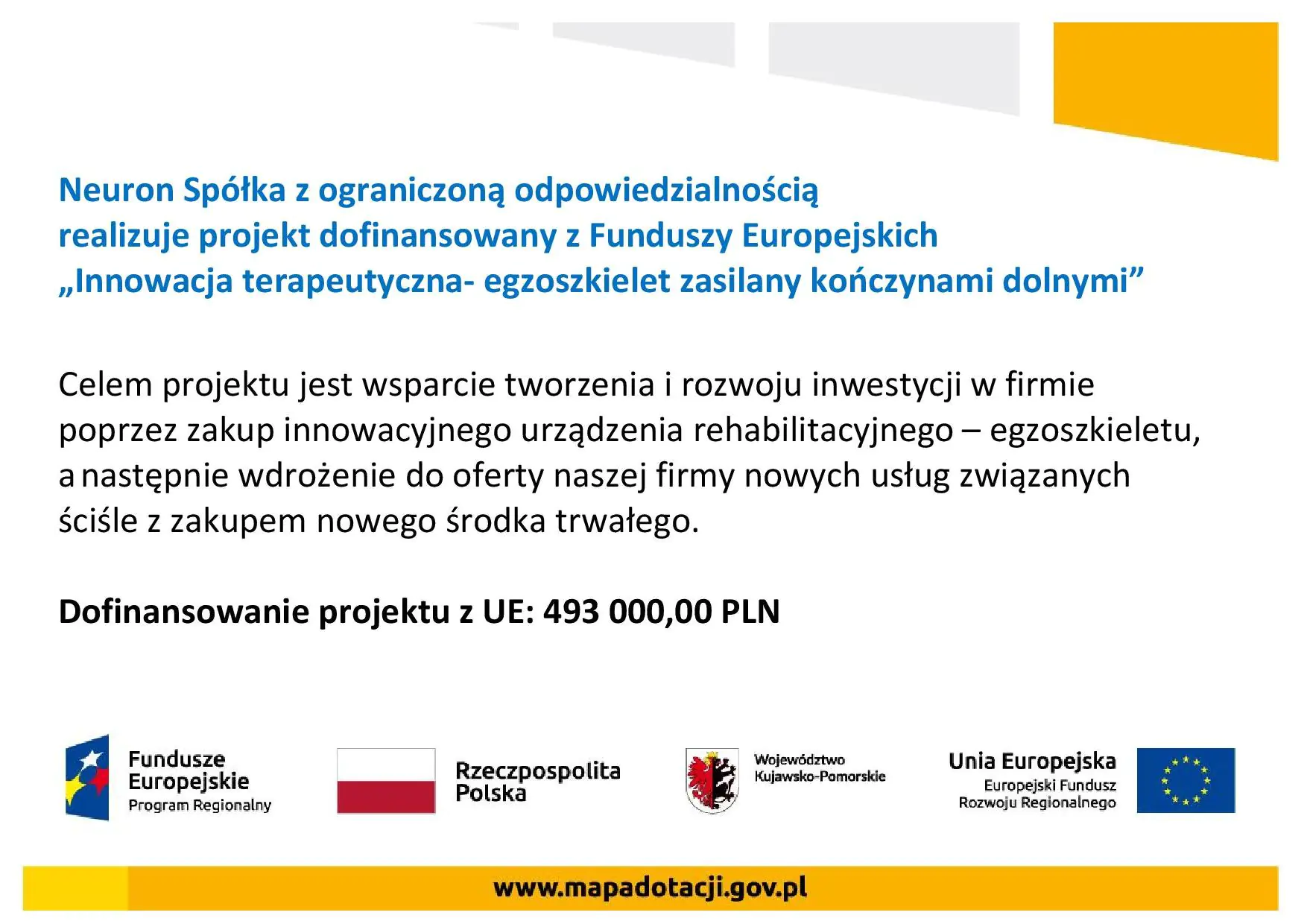One of our EksoNR exoskeletons is equipped with Functional Electrostimulation (FES) The FES module, which is compatible with the device, enables functional electrostimulation for even more intense stimulation of the muscular and nervous systems during gait. Combining the EksoNR with the FES, the EksoNR is a mobile exoskeleton for neurorehabilitation that can be used at different stages of rehabilitation. It offers personalised, effective therapy for patients with symptoms of paralysis caused by spinal cord injury, stroke, multiple sclerosis or other neurological disorders. Functional electrostimulation (FES) is a method that uses low-energy electrical impulses to create artificial muscle contractions in patients paralysed due to damage to the central nervous system. During this procedure, nerves are stimulated by surface electrodes. A low current of 0 to 130 milliamperes and a pulse width of 20 to 500 microseconds produces muscle contractions, enabling paralysed or partially paralysed patients to work on movement sequences..
The EKSO NR exoskeleton from the American company EKSO BIONICS is a portable bionic skeleton designed for use in the rehabilitation of virtually any patient with lower limb paresis. The prerequisite for training is that logical contact with the patient is maintained. It allows the patient to perform the movements of standing up from/ sitting down on a chair and to perform gait in a natural way, with correct load transfer between the limbs. The Esoskeleton is battery-powered, movements are performed by motors, which supports lost neuromuscular functions, so that you can, for example:
- Enable people after total paralysis, with minimal forearm dexterity, to perform the movements of standing up and walking;
- Re-teach the patient correct gait patterns;
- Support proper foot placement on the ground.

Indications for the use of EKSO gait therapy Exoskeleton:
- Spinal cord injuries (total and incomplete)
- Craniocerebral trauma
- Ischaemic and haemorrhagic strokes
- Spinal strokes
- Multiple Sclerosis
- Guillain-Barré syndrome
- Tumours of the spinal cord and nervous system
- Other conditions with impaired gait function


Contraindications to the use of EKSO gait therapy Exoskeleton:
- No referral from a doctor
-
Sores and poor skin integrity in areas in contact with the device
-
Severe spasticity (Modified Ashworth Scale – 4)
-
Unstable spine or unhealed limb/pelvic fractures
-
Osteoporosis
-
Significant contractures
-
Intellectual disability and mental disorder resulting in inability to follow directions (lack of cooperation with physiotherapist)
-
Colostomy
-
Reduced standing tolerance due to orthostatic hypotonia
-
Deep vein thrombosis
-
Lower limb prosthesis
-
Epilepsy
The EKSO NR exoskeleton is a gait re-education device designed for use under the supervision of a therapist in patients with varying degrees of paralysis (hemiplegia, total paralysis) that are the result of neurological conditions or trauma (e.g. stroke, spinal cord injury, traumatic brain injury).The EKSO NR exoskeleton aids gait in patients, and virtually every user approved by a doctor for training has already walked during the first session. The Exoskeleton can be used by, among others, patients with:
- Complete spinal cord injury up to and including C7;
- Partial core damage (at any level);
- Past incident stroke;
- Multiple Sclerosis;
- Muscular dystrophy;
- Cerebral Palsy;
- Guillain-Barre disease;
- A history of craniocerebral trauma.
Limitations to the use of gait therapy EKSO exoskeleton:
- height less than 150 cm
- body weight over 95 kg
- large contractures in the knee and ankle joints,
- no contact with the patient,
- severe visual impairment
- total lack of stability in sitting position
- deep vein thrombosis (DVT),
- orthostatic hypotonia
- high spasticity
- wounds and sores

A therapy session using the EKSO Exoskeleton includes: preparing the patient and the device for therapy, training for 25 to 45 minutes (depending on the patient’s capabilities) and detaching the patient from the device.
Required documents for therapy qualification:.
– current (no more than one year old) hip X-ray result (photograph on a plate or film)
– Patients with meningo-spinal hernia are additionally required to submit a bone density test result no older than 1 year, at the latest on the first day of the course or before enrolment in therapy.
Patients with spinal injuries are required to submit the result (photograph on disc or film) of a spinal x-ray no older than 1 year, at the latest on the first day of the course or before enrolment in therapy.










